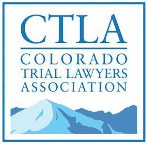Request a Free Consultation | No Upfront FeesSe Habla Español
970-225-2190 |
1-800-664-3151
Types of Car Insurance Coverage
What do the different types of coverages offered by insurance companies actually mean?
At the Hoggatt Law Office, we see people come in all the time who either don’t know what is covered under their type of car insurance, or have waived certain portions of their offered coverage not fully understanding what that is. We will attempt to explain several different types and aspects of automobile insurance coverage, and why certain aspects can be helpful if you’re involved in an accident.
Unfortunately, despite its common use, the term ‘full coverage’ does not have any accepted standard meaning. Many different insurance companies offer ‘full coverage,’ but what is included varies from company to company. While the below list is not exhaustive of all types of coverage that can be offered, and it does not fully explain the intricacies of the different types of coverage, it will hopefully give you an understanding of what these different types of coverage actually mean to you as an insured driver.
Liability Coverage
In Colorado, It is required by law to have liability insurance coverage on every vehicle that is on the road. Liability coverage protects the insured when they are at fault for a car crash. When liability coverage is offered, you are allowed to pick the amount of coverage you want. The state minimum is $25,000/$50,000. This means that if you are at fault for a car crash, your personal insurance company will cover the damage and losses the other party, with a maximum of $25,000 per each person, or a grand total of $50,000 per car crash.
For example, if you are in a car crash where the other party is greatly injured, with medical bills over $100,000, your insurance company will only be responsible for covering $25,000 of those bills. If the total amounts to more than your liability coverage, the other party is permitted to come after you personally for the remainder of the costs associated with the accident. For this reason, it is often a good idea to opt for a higher liability coverage amount, regardless of the increased costs for the policy.
As another example, if you are at fault for a car crash where three different individuals are all seriously injured, with over $100,000 in medical bills each, your car insurance is only responsible for paying $50,000 total for all parties involved in that particular crash. Again, the involved parties could come after you personally for the remainder of the medical bills.
Many drivers tend to opt for the state minimum for liability insurance coverage, due to the fact that it is the cheapest option available. Although the minimum liability coverage may be a more affordable option at the time, dealing with insufficient insurance coverage when you are at fault for an accident in the future is can have many potential negative consequences. If you do not know your current liability coverage amount, do your research and ensure that your coverage is sufficient to protect you in the unlikely event that you are at fault for an auto accident.
Uninsured Motorist Coverage & Underinsured Motorist Coverage
All insurance companies are required to offer drivers what is called UM/UIM coverage, which stands for uninsured and underinsured motorist coverage. This amount is typically equal to the amount you choose in liability coverage, with the state minimum again being $25,000. UM/UIM, unlike liability coverage, is not required by law, and you can waive this coverage.
UM, or uninsured motorist coverage, is important when you are in an accident involving another driver that does not have liability insurance, which is required by law. It also covers you in hit and run situations, when you are unable to determine who it was that hit you. In this scenario, your own insurance company will still cover you, despite the other person not having insurance.
UIM, or underinsured motorist coverage, kicks in when the person that hits your car does not have enough insurance coverage to fully satisfy your claim against them. To give an example, let’s say you are unfortunate enough to get hit by another car and it is the other car’s fault. If you have $50,000 in medical bills, but the other party only has $25,000 in liability coverage, your own insurance, through your UIM policy, will kick in and cover you for anything on top of the $25,000 the other side can cover. Again, it is not required that you have UIM coverage, but it is highly recommended.
Nobody ever wants to be in a situation where they were hit by a driver that either does not have any insurance at all, or not enough insurance to cover your injuries. That is why it is always important to check that your insurance policy has UM/UIM coverage, and to make sure that your coverage is sufficient.
Medpay Coverage
Medpay, or medical payments coverage, is another benefit your insurance company must offer, but you can refuse. Medpay provides money that can be used to pay your medical bills if you’re involved in an auto accident. This coverage can be beneficial for all, even if you have quality health insurance, since you will never be asked to pay these particular funds back! In Colorado, the minimum coverage amount that must be offered is $5,000, but medpay policies are often much higher than that. As opposed to getting higher amounts of liability or UM/UIM coverage, medpay is typically only a few dollars a month. If you are involved in a car crash, your medpay can help pay for an emergency room or urgent care visit, chiropractic or physical therapy treatments.
When we hear that people are hesitant to make either a UM/UIM or medpay claim, it’s usually because that person is afraid that their rates will go up after making a claim with their own insurance company. However, it is against Colorado insurance regulations to increase your insurance premiums because you made a UM/UIM or medpay claim.

970-225-2190 | 1-800-664-3151
1403 W. 29th St.,
Loveland, Colorado 80538
Greeley:
3835 W. 10th Street, Unit 100,
Greeley, Colorado 80634|
970-460-2220
Longmont:
2204 18th Ave, Suite 123,
Longmont, Colorado 80501|
720-575-0509
Boulder:
4450 Arapahoe Avenue, Suite 100,
Boulder, Colorado 80303|
303-997-2018
Ft. Collins:
123 North College Ave., Suite 160,
Fort Collins, CO 80524|
970-225-2190
Cheyenne:
109 E. 17th St., Suite #6148,
Cheyenne, WY 82001|
307-227-4051 (By Appointment Only)















